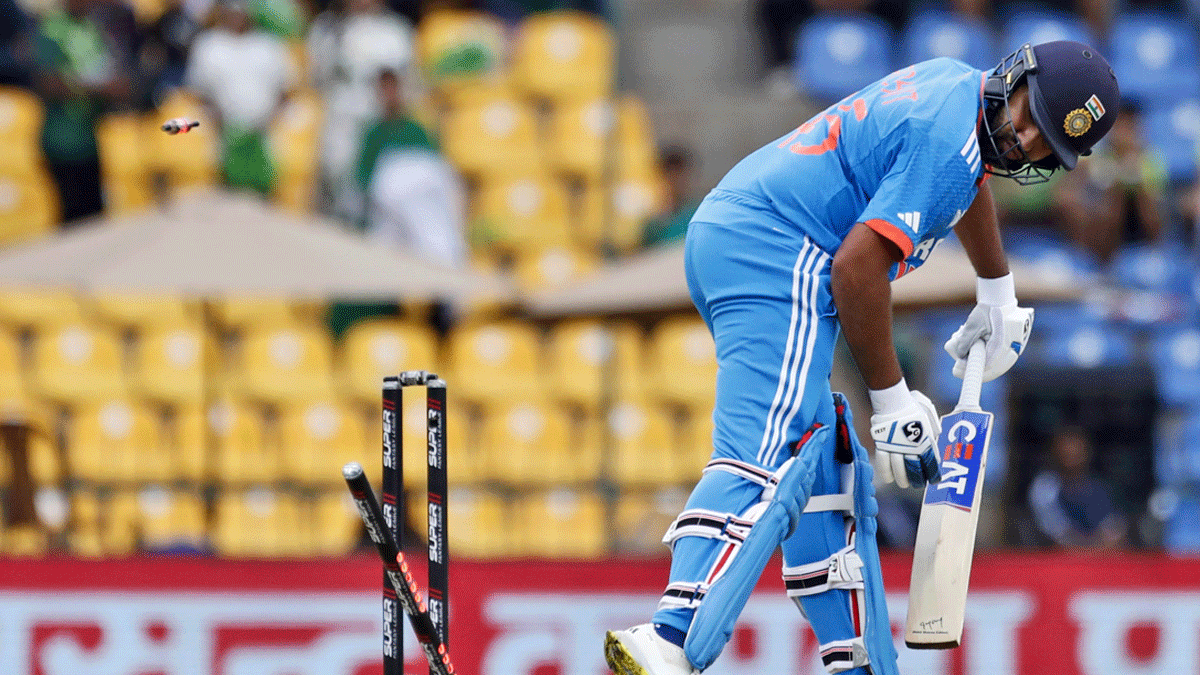Rohit Sharma has captured the imagination of fans in the ever-evolving landscape of international cricket. With his breathtaking strokeplay and unparalleled ability to anchor an innings, Rohit has become a cricketing icon. However, even the most celebrated batters have their Achilles’ heel, and for Rohit Sharma, it appears to be his struggle against left-arm seamers. This article dives deep into the tactical aspects of Rohit’s game, exploring why he has faced continuous challenges when confronted with this specific type of bowling.
The Phenomenon of Rohit Sharma
Before dissecting Rohit Sharma’s struggles against left-arm seamers, it’s essential to acknowledge his remarkable cricketing journey. Rohit Sharma’s elegance at the crease and the effortless manner in which he dispatches deliveries to the boundary have earned him the moniker of “The Hitman.” He has achieved numerous milestones, including three double centuries in One Day Internationals (ODIs).
However, even cricketing greats have moments of vulnerability, and Rohit’s struggle against left-arm seamers is one such instance that has perplexed cricket enthusiasts and analysts alike.
The Technical Alterations
To understand why Rohit Sharma faces difficulties against left-arm seamers, we must delve into the technical aspects of his game. Over the years, keen observers have noted a few key changes in his approach when facing this type of bowling.
1. Grip and Bat Face
One noticeable change in Rohit’s technique is his grip and the alignment of the bat face. Against left-arm seamers, his top-hand grip tends to be more closed, causing the face of the bat to close along with it. This alteration affects how he approaches deliveries, particularly those that shape away from him. When facing the away-going delivery, the closed face can lead to mistimed shots or edges.
2. Trigger Movement
Another tactical aspect that has drawn attention is Rohit Sharma’s trigger movement. Instead of moving forward and into the delivery line, Rohit tends to move back and across, almost crossing the back foot behind the front leg. While this trigger movement is part of his setup against most bowlers, it can become problematic when facing left-arm seamers. The exaggerated movement towards the leg side can lead to issues with balance and footwork, making him susceptible to LBW dismissals or mistimed shots.
The Age Factor
Despite being in his prime, Rohit Sharma is not immune to the effects of ageing. At 36 years of age, he is well into the latter stages of his cricketing career. With age often comes changes in reflexes and physical attributes, which can impact a player’s adaptability, especially against specific types of bowling.
One critical aspect influenced by age is the player’s backlift. Rohit Sharma is known for his high backlift, which allows him to generate tremendous power and timing. However, as a player gets older, maintaining the same high backlift and quick reaction time can become challenging. With their ability to swing the ball away from Rohit, left-arm seamers exploit any decrease in reflexes and reaction time.
The Mental Aspect
Cricket is not just about physical skill; it’s also a battle of the mind. Rohit Sharma’s struggles against left-arm seamers may be partly psychological. Once a player starts experiencing difficulties against a particular type of bowling, it can create doubt and anxiety, further compounding the problem. The mental aspect of cricket cannot be underestimated, and any lingering doubts can affect a batter’s decision-making and shot selection.
Tactics Employed by Left-Arm Seamers
It’s essential to recognize that left-arm seamers have their tactical advantages when bowling to Rohit Sharma. They often swing the ball into him, targeting a specific corridor outside the off-stump. This strategy aims to exploit Rohit’s vulnerability against deliveries that shape away from him, where he may struggle to find the right balance between leaving the ball and playing it.
Moreover, left-arm seamers tend to vary their length and line, making it challenging for Rohit to settle into a comfortable rhythm. Mixing up deliveries that are full and swinging with those that are short and angling across can create uncertainties in Rohit’s mind, leading to mistimed shots or dismissals.
The Road Ahead for Rohit Sharma
Understanding the tactical challenges Rohit Sharma faces against left-arm seamers is just the first step towards addressing this issue. Like all great batsmen, Rohit has the ability to adapt and overcome challenges. Here are a few key considerations for him moving forward:
1. Technical Adjustments: Rohit Sharma could work on refining his technique against left-arm seamers. This might involve fine-tuning his grip and trigger movement to better handle deliveries that move away from him. Working with coaches and analyzing video footage can be invaluable in making these adjustments.
2. Mental Conditioning: A strong mental game is essential for any batsman. Rohit can benefit from sports psychologists who can help him develop strategies to stay mentally focused and confident, particularly when facing left-arm seamers.
3. Adaptation: As Rohit Sharma ages, he might need to adapt his playing style to mitigate the challenges posed by left-arm seamers. This could involve modifying his backlift or refining his shot selection against specific types of deliveries.
4. Preparation: Before matches, Rohit can engage in targeted practice sessions where he specifically faces left-arm seamers. Repetition and practice against this type of bowling can build confidence and comfort.
While Rohit Sharma’s struggles against left-arm seamers have been a topic of discussion, they are by no means insurmountable. Cricket is a dynamic sport, and players often face challenges that require adaptation and resilience. Rohit’s remarkable talent and experience suggest that with the right adjustments and mindset, he can overcome this hurdle and continue to dazzle fans with his exquisite strokeplay for years to come.

